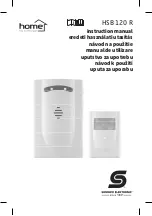
P a g e
| 20
Rev. 2.1 7-7-2017
Copyright © 2017 by Cool Air Incorporated. All rights reserved.
Failure indicators
If the detector display is behaving erratically and going in and out of
alarm, the sensor or sensor adaptor board may be disconnected or
defective.
TEST AND CALIBRATION
Be sure to follow all codes and company procedures that pertain to
the maintenance, repair, testing, and calibration of all safety
equipment, including this detector. At a minimum, the detector
must be tested after installation (allow at least 10 minutes after first
applying power to the detector), and at least once a month thereafter
to ensure it is operating correctly. Also, the detector must be
calibrated at least once a year to ensure it is detecting and displaying
ammonia concentration accurately.
The detector is initially calibrated and programmed at the factory.
However, if a new ammonia sensor is installed, the detector must be
recalibrated. All tests and calibrations must be recorded.
Not installing, maintaining, testing, or calibrating the detector
according to the schedules and procedures in this manual will
automatically void the warranty.
Testing the Detector
To test the detector, follow these steps:
1.
Open the detector enclosure and move the service jumper to the
“ON” position, if needed. This step disables the Pre-Alarm,
Alarm, and Auxiliary relays so that any attached strobe lights,
horns, and/or monitoring systems are not activated. In some
applications, if alarming is required, leave the service jumper in
the “OFF” position.
2.
Attach the calibration adaptor to the sensor and flow the test
gas at no greater than .5Lpm.
3.
Check the following:
When the ammonia concentration reaches the Alarm
set point the Alarm LED (red) will blink.
Digital display shows an increasing concentration of
ammonia in PPM.








































